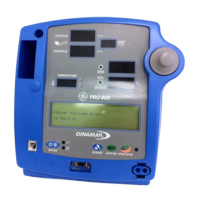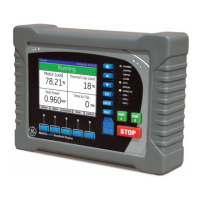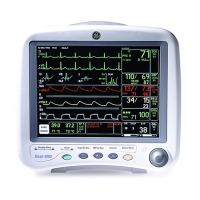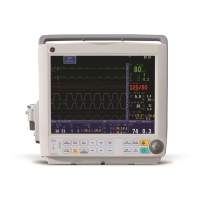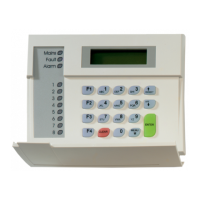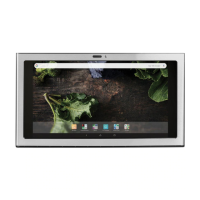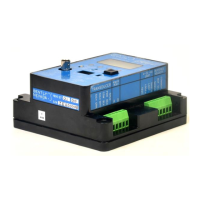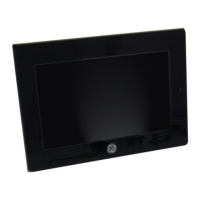Field replaceable units: Disassembly guidelines
7-8 Dash 3000/4000/5000 2000966-542D
Hardware precautions
When disassembling the patient monitor, observe the following
guidelines:
Remove the handle assembly, then remove the display assembly to
access the field replaceable units of the display assembly and the
main unit.
Note the positions of wires, cables, and different sized screws;
marking them if necessary to ensure they are replaced correctly.
Do not kink, pinch, stretch, twist, or tightly fold a flex cable.
Unless otherwise stated, reassemble the patient monitor in reverse
order of disassembly.
Electrostatic discharge (ESD) precautions
All external connector inputs and outputs of the patient monitor are
designed with protection from ESD damage. However, if the patient
monitor requires service, exposed components and assemblies contained
within are susceptible to ESD damage. This includes human hands, non-
ESD protected work stations and/or improperly grounded test
equipment.
The following guidelines help make a service workstation more resistant
to the ESD damage:
Discharge any static charge you may have built up before handling
semiconductors or assemblies containing semiconductors.
A grounded, antistatic wristband (3M part number 2046 or
equivalent) or heel strap should be worn at all times while handling
or repairing assemblies containing semiconductors.
Use properly grounded soldering and test equipment.
Use a static-free work surface (3M part number 8210 or equivalent)
while handling or working on assemblies containing semiconductors.
Do not remove semiconductors or assemblies containing
semiconductors from antistatic containers (Velo-stat bags) until
absolutely necessary.
Make sure power to an assembly is turned off before removing or
inserting a semiconductor.
Do not slide semiconductors or electrical/electronic assemblies across
any surface.
Do not touch semiconductor leads unless absolutely necessary.
Semiconductors and electrical/electronic assemblies should be stored
only in antistatic bags or boxes.
Handle all PCB assemblies by their edges.
Do not flex or twist the circuit board.
These guidelines may not guaranty a 100% static-free workstation, but
can greatly reduce the potential for failure of any electrical/electronic
assemblies being serviced.
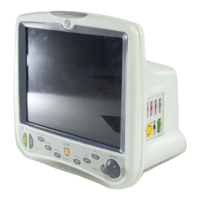
